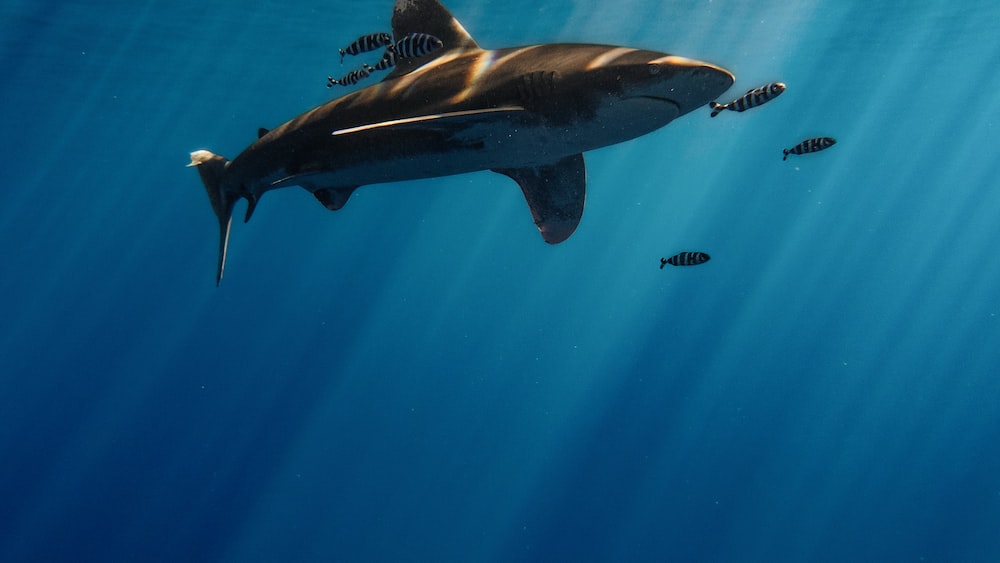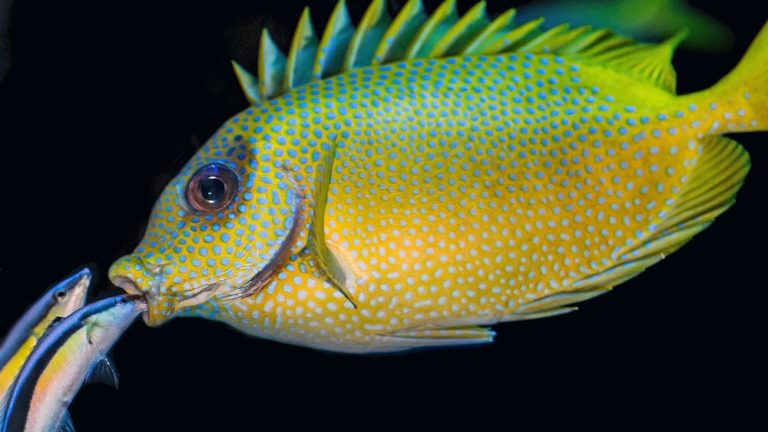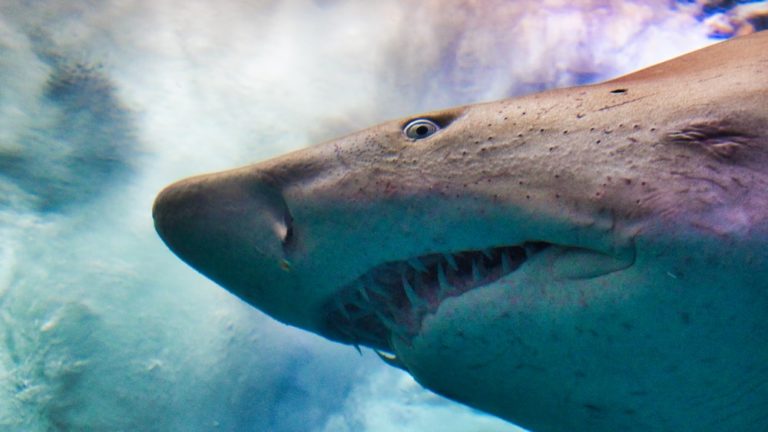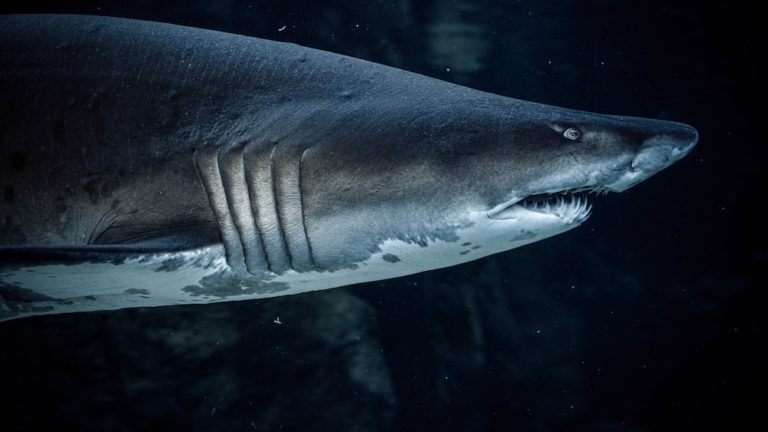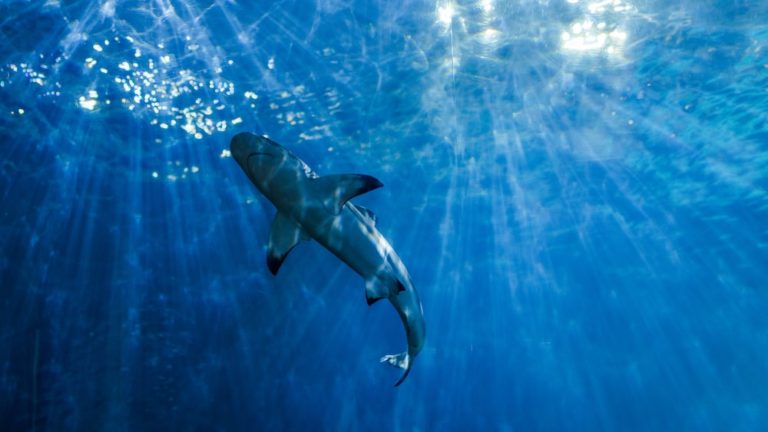Discovering The Truth: Do Sharks Give Birth?
Discovering The Truth: Do Sharks Give Birth?
Dive into the deep blue and discover a world teeming with mysteries. Do sharks give birth? Absolutely, but the story isn’t as straightforward as you might think. These apex predators of the seas have reproductive strategies as varied as the ocean’s depths.
Key Points:
- Sharks have three primary reproductive modalities: oviparity (egg laying), viviparity (live birth), and ovoviviparity (a combination of the two).
- The health of marine environments plays a critical role in the reproductive success of sharks.
- Sharks exhibit diverse strategies for parental investment and pup survival.
- Human activities pose threats to shark reproduction, including overfishing, habitat destruction, and climate change.
- Conservation efforts, such as establishing marine protected areas and implementing sustainable fishing practices, are crucial for protecting shark birthing areas.
- Sharks typically do not provide care after birth, and shark pups inherit a natural instinct to fend for themselves.
- Conservationists and marine enthusiasts play a critical role in safeguarding shark reproduction and ensuring the continuation of their lineage.
For marine life enthusiasts and conservationists alike, the birthing habits of sharks are a subject of endless fascination. These cartilaginous fish are not just about their notorious bites; their reproduction process is an odyssey of biological wonders.
Join me under the waves as we explore the three primary modes of shark birth, a journey that takes us through the delicate balance of nature. It’s a tale of survival and the stark realities facing these misunderstood creatures in an ocean under siege.
The Diversity of Shark Reproduction
The world of shark reproduction is astonishingly diverse, with every species having adapted to thrive in its unique corner of the marine environment. From the laying of eggs to the birth of fully-formed pups, the methods of ensuring their lineage’s survival are as fascinating as they are varied.
The Three Main Reproductive Strategies
Sharks have three primary reproductive modalities: oviparity (egg laying), viviparity (live birth), and the intriguing middle ground – ovoviviparity.
Oviparous species leave their eggs, encased in protective coverings, to develop in the ocean’s embrace. On the other hand, viviparous species carry their embryos to term, bringing forth live young. Then we have the ovoviviparous sharks, a blend of the two, where the eggs hatch inside the female’s body.

Sharks have three primary reproductive modalities: oviparity, viviparity, and ovoviviparity, each with unique ways of bringing forth new life.
The Role of the Environment in Shark Birth
The health of marine environments plays a critical role in the reproductive success of sharks. Factors such as water temperature, salinity, and habitat stability are crucial in determining where and when a shark can successfully reproduce.
Areas rich in nutrients and shelter form the breeding grounds for many shark species. Female sharks are often selective, seeking out environments that offer their pups the best shot at survival, whether that means laying eggs in hidden nooks or giving live birth in the safety of a nursery.
The Egg-Laying Sharks (Oviparity)
Oviparity is an evolutionary strategy that certain shark species have perfected, laying eggs that will develop and hatch outside the mother’s body. This method has its advantages and, like all things in nature, its risks.
Common Oviparous Shark Species
Among the oviparous crowd, several species stand out, each with its unique adaptation to the egg-laying life.
- The horn shark favors the nooks within rocky crevices for its spiral-shaped eggs, providing a sturdy anchor against strong currents.
- Catsharks, such as the swell shark and chain dogfish, also belong to this oviparous club, releasing their distinct ‘mermaid purses’ into the marine foliage.
Understanding Mermaid Purses and Spiral Eggs
Mermaid purses, the colloquial term for the protective egg cases of some oviparous sharks, invoke images of underwater treasure. Made of a tough, leathery substance, these cases protect the developing embryo within, each species boasting a shape suited to its environment.
Spiral eggs, particularly from the horn shark, exhibit an auger-like shape that corkscrews into crevices for security. These cunning designs are evolutionary answers to a world where survival is never guaranteed.
Nature’s ingenious designs, like the protective egg cases of oviparous sharks, showcase the evolutionary adaptations for survival in a challenging world.
Live Birth Sharks (Viviparity)
In stark contrast to their egg-laying relatives, viviparous sharks offer a glimpse into maternal investment taken to another level. These species gestate their embryos internally, providing direct nourishment until they are born.
Viviparous Species and Their Birthing Habits
Sharks that favor live birth have adapted diverse strategies to maximize their offspring’s success.
- The hammerhead and bull shark are prime examples of viviparous sharks, where embryos develop within the mother, sustained by a yolk sac, until they’re ready to start their life in the open sea.
- These sharks often seek out shallow, warmer waters to act as nurseries, providing a relatively safe space for their vulnerable pups to grow.
Parental Investment and Pup Survival Strategies
Parental investment among viviparous sharks doesn’t end with gestation.
- The post-birth survival strategy for species like the Lemon shark is fascinating: their young tend to stay in the shallow nursery areas for years, benefiting from the abundant food and reduced predation.
- This form of parental care, albeit indirect, significantly increases the pups’ odds of survival, a tender detail in the otherwise tough exterior of these cartilaginous creatures.
The Middle Ground (Ovoviviparity)
Ovoviviparity represents a fascinating evolutionary strategy – a middle ground that offers a clever combination of egg-laying and live birth. It embodies the adaptability of sharks in their quest for reproductive success.
The Process of Ovoviviparity in Sharks
In the realm of ovoviviparous reproduction, shark embryos start their development encased in eggs but remain within the female’s body.

- These eggs are then hatched internally, and the pups continue to grow until they’re ready to make their grand entrance into the ocean, fully formed and ready to fend for themselves.
- This process blurs the lines between the security of egg casings and the direct nourishment provided by viviparity, striking a balance that has served many shark species well through the ages.
Nature often teaches us valuable lessons about finding balance and adaptability, just like the unique reproductive process of sharks, blending the security of egg encasement with the benefits of internal nourishment for their offspring.
Nutritional Strategies: Oophagy and Embryophagy
The internal world of ovoviviparous sharks reveals a cradle of life with the awe-inspiring, if somewhat ruthless, practices of oophagy and embryophagy. These are strategies where stronger embryos consume their siblings or unfertilized eggs as a source of nourishment.
- In a Darwinian twist, only the fittest embryos make it to birth – a natural selection process that begins even before a shark sees the world.
- This cutthroat approach to early life ensures those that do emerge have already proven their mettle in the most primal of ways.
Mating Rituals and Fertilization
The intricacies of shark mating rituals and fertilization processes are as complex and varied as the species themselves. Courtship can be a fascinating dance in the depths, often involving delicate, albeit sometimes aggressive, interplays.
- In the world of sharks, mating is usually preceded by male sharks displaying a series of behaviors that signal their intent.
- Once the female accepts the advances, internal fertilization occurs – a method that ensures a high probability of reproductive success, safeguarding the perpetuation of these magnificent creatures.
The Complex Courtship of Sharks
When it comes to the matters of the heart – or shall we say, the ocean’s depths – sharks exhibit a fascinatingly complex courtship behavior. Unlike what we see in many species on land, male sharks often have to go to great lengths to woo their female counterparts. Courtship rituals can range from gentle nudges to more assertive physical contact such as biting, which in the world of sharks, is a sign of affection rather than aggression.
Females, for their part, are built to withstand these advances with skin up to three times thicker than their male suitors. In some cases, the courtship is so elaborate that it can be seen as a theatrical display of underwater ballet. The dance of the two animals whirl together, creating a spectacle that’s as mysterious as the deep blue itself.
Observing these rituals first-hand is a rare privilege, like stumbling upon a secret meeting deep in Neptune’s realm. Surprisingly, shark courtship has only been observed in a few species, leaving much to the imagination about what goes on beneath the waves. Sharks, it seems, are as unpredictable in love as they are in the wild.
Sharks exhibit a fascinatingly complex courtship behavior, involving elaborate rituals that can range from gentle nudges to more assertive physical contact, and observing these rituals is a rare privilege.
Internal Fertilization and Its Implications
Sharks, like their terrestrial mammalian counterparts, engage in internal fertilization, a factor that influences their reproductive strategies. This method has significant implications for their population dynamics. For instance, internal fertilization necessitates closer proximity and more contact between individuals during mating, a requirement that could pose challenges for widely dispersed populations.
The fertilization process in sharks is no fleeting affair; male sharks have paired reproductive organs called claspers, which they use to transfer sperm directly into the female. This direct transfer ensures a higher chance of successful impregnation but also means that sharks have fewer offspring compared to many other marine creatures that release vast numbers of eggs into the water. It’s a delicate balance between effort and payoff – a dance of nature’s precision, with each move critical for species survival.
Shark Nurseries and Pup Rearing
Dive into the world of shark nurseries, and you’ll find underwater cradles brimming with future ocean roamers. Like protective parents choosing the safest neighborhood to raise their young, sharks exhibit surprising foresight in selecting the optimal environments for their pups to grow and thrive.
The Importance of Nurseries for Shark Pups
Sharks, much like humans, recognize the need for a safe place to bring their young into the world. Shark nurseries are areas where pregnant females congregate to give birth, providing a sheltered environment away from predators where their young can mature with a reduced risk of predation. These nurseries are often replete with an abundance of food and the perfect balance of salinity and temperature – key factors for a pup’s survival during its vulnerable early life stages.
A shark pup born in a well-selected nursery has a head start in life. It can perfect its swimming skills among the shelter of mangroves or navigate the intricate hideouts of the coral reefs, playing hide and seek with its siblings as it learns the ways of the underwater world. This initial security is paramount in those first breaths of life, which are the most precarious for these budding predators.
Scientists, some like the notable James Sulikowski, have come to understand the critical importance of these nurseries and are actively studying them using advanced technology to better protect future generations. After all, in the vast blue desert that is the ocean, finding these oasis of life can be almost miraculous – akin to discovering an unseen galaxy teeming with stars waiting to be charted.
Do Sharks Provide Care After Birth?
Contrary to the maternal care observed in some ocean dwellers, sharks typically do not stick around after the big event of birth. Once the pups enter the world, they are on their own – nature’s way of ensuring only the fittest survive. Shark pups inherit a natural instinct to fend for themselves, embarking on a solitary journey from the moment they’re born.
There’s a certain beauty in this hands-off approach; shark pups are the ultimate survivors, equipped from day one to navigate the perils of the marine world. They immediately exhibit hunting behaviors and evasion tactics, having been equipped with all the necessary tools as they developed – whether via oviparity, viviparity, or ovoviviparity. This lack of parental care does pose an existential challenge, with only about 40% of pups expected to reach adulthood in the wild.
The lone path of a shark pup is a stark reminder of the harsh realities of life under the sea. While this might paint a somber picture, it’s also a testament to the remarkable resilience of these animals. Unaided by parental guidance, each pup must carve its own path in the ocean’s vast canvas – where every ripple and wave might bring a new challenge or an opportunity to grow stronger.
Shark pups inherit a natural instinct to fend for themselves, embarking on a solitary journey from the moment they’re born, equipped from day one to navigate the perils of the marine world.
Conservation Concerns for Reproducing Sharks
As marine life enthusiasts, eco-adventurers, and conservationists, we must turn our attention to the future of these majestic creatures of the deep regarding conservation concerns for reproducing sharks. Safeguarding their ability to birth and rear offspring isn’t just a matter of preserving the ecological tapestry; it’s about ensuring the continuation of a lineage that predates the dinosaurs.
Threats to Shark Reproduction
The dance of shark reproduction is intricate and, increasingly, fraught with dangers lurking not in the depths of their aquatic realm but from above the surface. Threats to shark reproduction are as multifaceted as the animals themselves, ranging from overfishing to habitat destruction. These actions disrupt the delicate balance of their mating rituals and nursery sites, ultimately affecting population stability.
Sharks take several years to reach sexual maturity, and once there, prolific reproduction is still not guaranteed. Overfishing can significantly reduce the number of mature sharks in the population, making it more challenging for them to find mates. Moreover, the capture of pregnant females near nursery grounds can have a devastating impact, wiping out entire future generations in a single swoop. These realities highlight the urgent need for proactive conservation measures.
Additionally, the changing climate and its impact on ocean acidification and temperature can disrupt the finely-tuned senses of sharks, necessary for successful reproduction. With the cards stacked against them, these predators face a gamble every time they attempt to give birth – making the role of conservation in their survival even more crucial.
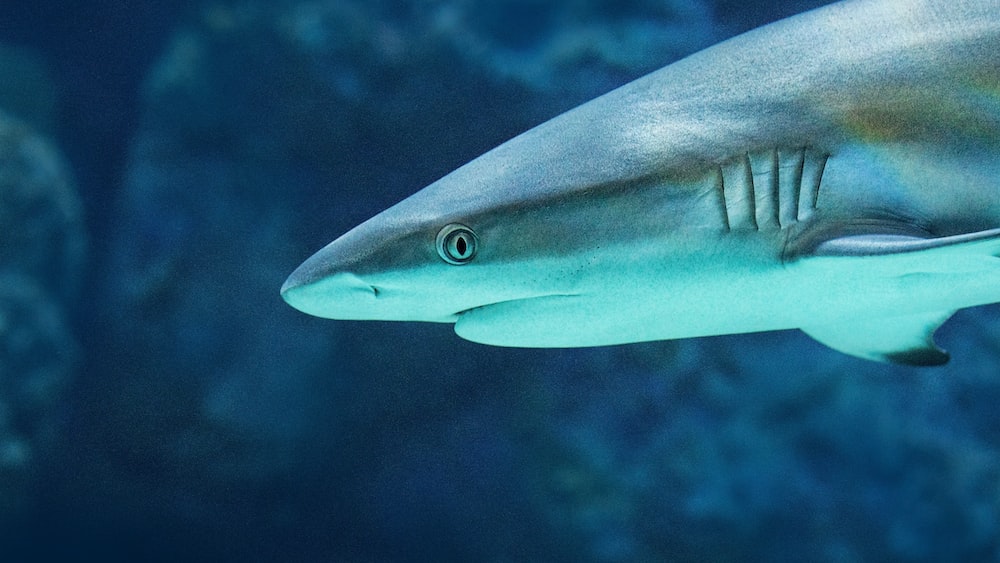
The Impact of Human Activities on Shark Birth Sites
Human activities, while instrumental in the advancement of our species, often cast a dark shadow on the nursery grounds sharks depend upon. Destructive fishing practices can quite literally tear the ocean floor to pieces, leaving a barren wasteland where once there was a thriving nursery. Coastal developments, meanwhile, erode the mangrove forests and seagrass beds that are vital as sheltered areas for young sharks.
The use of technology has, on one hand, provided valuable insights into the lives of these mystifying creatures; however, it also poses new threats. Vessels and noise pollution disrupt the natural behavior of sharks, sometimes even leading to abandonment of traditional birthing sites. Addressing these impacts not only involves regulatory measures but also an understanding and appreciation of these critical habitats among the general populace.
FAQs
1. How can you tell if a shark is oviparous or viviparous?
You can tell if a shark is oviparous or viviparous by observing their reproductive behavior or examining their anatomy. Oviparous sharks lay eggs outside their bodies, often encased in distinctive leathery pouches known as mermaid’s purses. In contrast, viviparous sharks give birth to live young, having carried the developing pups within their bodies.
2. Do all sharks give birth in the same type of environment?
Not all sharks give birth in the same type of environment. The choice of birth sites varies among species, with some preferring the shallow, sheltered waters of nurseries like coral reefs or mangroves, while others may give birth in deeper, open ocean environments, each providing its advantages for the survival of the young sharks.
3. What is the longest known gestation period for a shark?
The longest known gestation period for a shark is 22 months, as exhibited by the deepwater swell shark. This prolonged gestation is a remarkable feature in the shark world, highlighting the diverse reproductive strategies of these formidable yet fascinating sea creatures.
4. How do conservation efforts aid in the protection of shark birthing areas?
Conservation efforts aid in the protection of shark birthing areas by establishing marine protected areas (MPAs), implementing sustainable fishing practices, and raising awareness about the pivotal role sharks play in marine ecosystems. These measures collectively work to ensure safe havens for sharks to successfully give birth and rear their pups.
Conclusion
Embarking on this deep dive into the reproductive life of sharks, we’ve unraveled the mysteries surrounding the question: do sharks give birth? Indeed they do, in a myriad of complex and awe-inspiring ways that reflect the diversity and resilience of life beneath the waves. Our journey has shown us that sharks are not solitary predators but are key players in a delicate marine symphony – one in which birth is but the first note of a life full of adventure and survival.
As guardians of the ocean’s rhythm, we carry the responsibility of ensuring that this symphony never falters. Through both individual actions and collective efforts, we have the power to tune our relationship with the ocean, helping secure a future not just for sharks but for all marine life.
Let’s embrace the call to safeguard the spaces where these underwater nomads bring their young into the world. With the curiosity of a marine life enthusiast, the bravery of an eco-adventurer, and the dedication of a conservationist, we can all contribute to the grand tale of life beneath the tides. Until our paths cross again in the boundless blue, keep your fins up and your hearts open to the wonders of the ocean.
Signing off with a wave of the fin,
Jasper Flynn.

